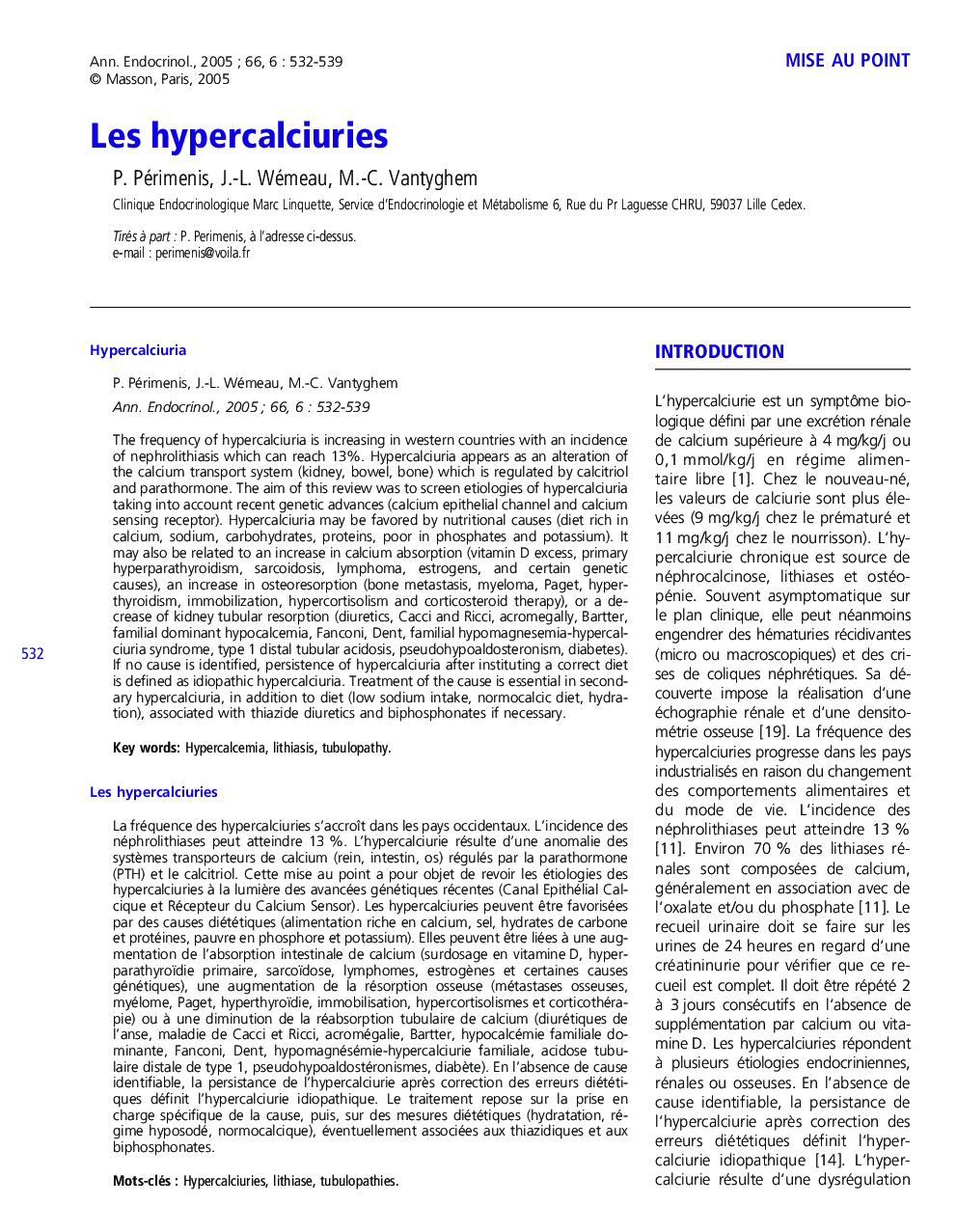| Article ID | Journal | Published Year | Pages | File Type |
|---|---|---|---|---|
| 9235680 | Annales d'Endocrinologie | 2005 | 8 Pages |
Abstract
The frequency of hypercalciuria is increasing in western countries with an incidence of nephrolithiasis which can reach 13%. Hypercalciuria appears as an alteration of the calcium transport system (kidney, bowel, bone) which is regulated by calcitriol and parathormone. The aim of this review was to screen etiologies of hypercalciuria taking into account recent genetic advances (calcium epithelial channel and calcium sensing receptor). Hypercalciuria may be favored by nutritional causes (diet rich in calcium, sodium, carbohydrates, proteins, poor in phosphates and potassium). It may also be related to an increase in calcium absorption (vitamin D excess, primary hyperparathyroidism, sarcoidosis, lymphoma, estrogens, and certain genetic causes), an increase in osteoresorption (bone metastasis, myeloma, Paget, hyperthyroidism, immobilization, hypercortisolism and corticosteroid therapy), or a decrease of kidney tubular resorption (diuretics, Cacci and Ricci, acromegally, Bartter, familial dominant hypocalcemia, Fanconi, Dent, familial hypomagnesemia-hypercalciuria syndrome, type 1 distal tubular acidosis, pseudohypoaldosteronism, diabetes). If no cause is identified, persistence of hypercalciuria after instituting a correct diet is defined as idiopathic hypercalciuria. Treatment of the cause is essential in secondary hypercalciuria, in addition to diet (low sodium intake, normocalcic diet, hydration), associated with thiazide diuretics and biphosphonates if necessary.
Related Topics
Health Sciences
Medicine and Dentistry
Endocrinology, Diabetes and Metabolism
Authors
P. Périmenis, J.-L. Wémeau, M.-C. Vantyghem,
